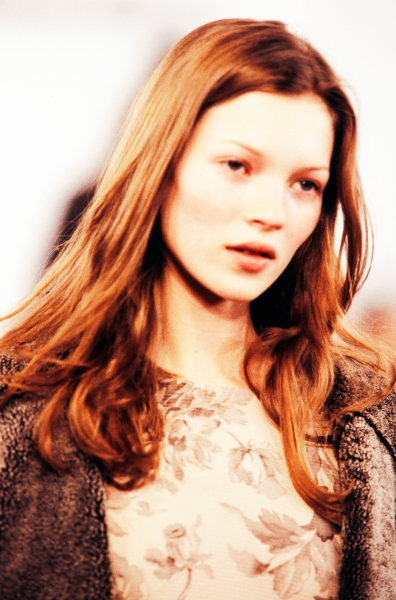Contents
Born in the ’80s at the beginning of Seattle’s rock-music renaissance, the grunge aesthetic didn’t truly blossom until the early ’90s. But before it became a full-fledged fashion phenomena, it was a counterculture and an ethos—one that was fueled by a burgeoning roster of indie bands who blended metal and punk to create a groundbreaking new sound.
“It could have been sludge, grime, crud, any word like that,” Jonathan Poneman, founder of the genre-defining record label Sub Pop—who is largely credited for coining the term—told The New York Times in 1992. Regardless, the whole point was that the sound—and ultimately, the grunge aesthetic—wasn’t squeaky clean. It was gritty, raw, and distorted; it was Soundgarden, Pearl Jam, and Alice in Chains.
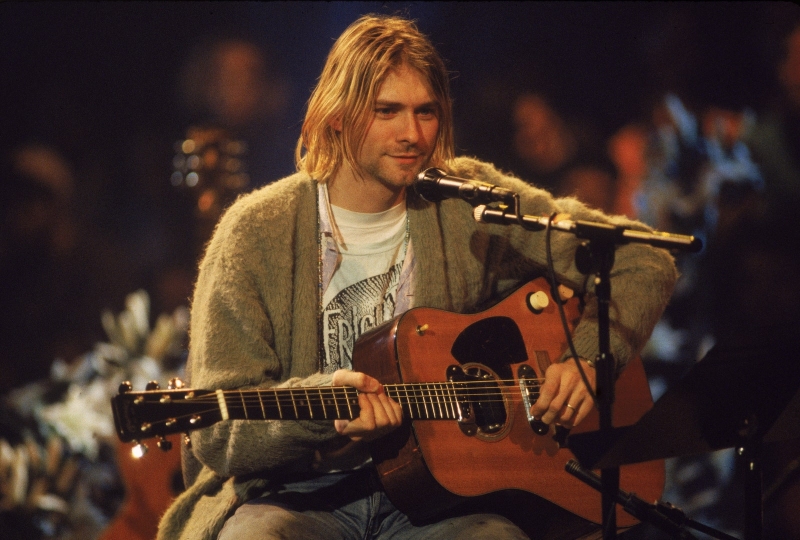
When did grunge start?
It was also, of course, Nirvana. When the Pacific Northwest band released its game-changing album Nevermind in 1991, its single Smells Like Teen Spirit quickly took over the MTV airwaves—alongside a whole lot of guitar-smashing and emotive vocals. Led by lead singer Kurt Cobain, the band members of Nirvana (Dave Grohl, Kris Novoselic) became the de facto faces of the grunge era in short order, providing a compelling counterpoint to the “cock rock” hair bands and bubblegum pop stars of the ‘80s.
Cobain—whose torn-up jeans, matted hair, and moth-eaten grandpa cardigans belied his handsome looks—also provided endless style inspiration. He wasn’t afraid to throw a tattered baby doll dress on over his long underwear or don an oversized pair of glasses. “Kurt Cobain was the antithesis of the macho American man,” Alex Frank, an editor at The Fader, told Vogue in 2014. “He was an avowed feminist and confronted gender politics in his lyrics. At a time when a body-conscious silhouette was the defining look, he made it cooler to look slouchy and loose, no matter if you were a boy or a girl. And I think he still represents a romantic ideal for a lot of women.”
Meanwhile, Cobain’s wife Courtney Love, was making style waves of her own. Known for her regular rotation of slinky slip dresses, ripped fishnet tights, and Mary Jane shoes, she radiated an unapologetic aura of disheveled, broken glamour. Onstage as the lead singer of Hole, her red lipstick was smeared; her eyeliner was smudged; and her tiara, off-kilter. She proudly called her style “kinderwhore.”
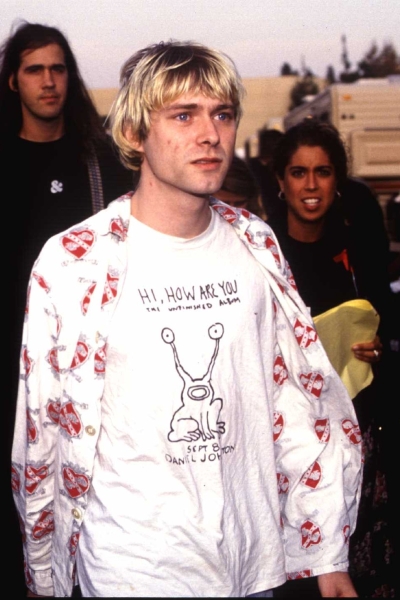
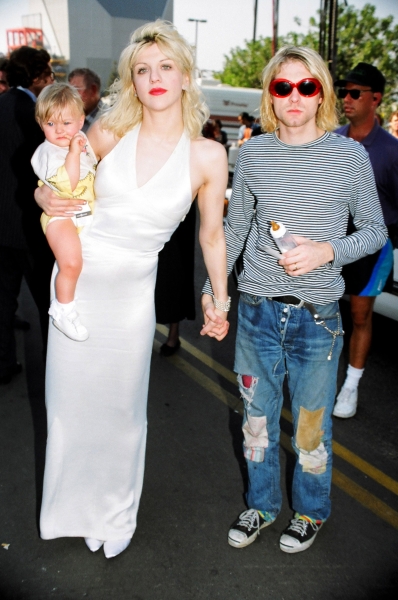
What is grunge style?
Seattle’s damp and gloomy climate nurtured the prevailing preference for a relaxed silhouette, soft fabrics, and disparate layers. Though the grunge aesthetic drew inspiration from prior subcultures and musical genres, like goth, punk, metal, and folk rock—as well as eras ranging from the ‘40s to the ‘70s—it was not necessarily about making an overt style statement or looking tough. Instead, early grunge adopters favored authenticity long before it was a buzzword, mixing outdoorsy staples with vintage pieces and everyday clothes. There was an earnestness to grunge; it was not in-your-face like punk.
To that end, wearers of grunge mined thrift stores and workwear shops to curate their looks. And, they customized them, too: In an era before TikTok, band tees displayed people’s musical tastes, patches and pins were a window into one’s politics, and a DIY ethos revealed one’s fundamental values.
For men, this meant layering on loose slogan T-shirts, oversized hoodies, flannel shirts, slouchy jeans, faded denim jackets, droopy beanies, corduroy work jackets, and shorts over leggings. The shoes of choice were Birkenstocks, Vans, Converse, or floor-stomping Doc Marten combat boots. And though they might have played with gender-bending styles or lean towards androgyny with dresses and kilts, grunge bands did not dress differently for their shows; instead, they simply wore their “mundane” clothes.
Women wore all of the above, too. However, like Love, they also mixed twee, girlish pieces—like baby tees, baby barrettes, and baby doll dresses with Peter Pan collars—with their flannel jackets and Dickies pants. They preferred wide-leg jeans and bell bottoms to figure-hugging styles; they didn’t mind if there were runs in their tights. Fabrics were moody and tactile, like velvet, lace, crochet, chenille, and mohair; prints ran the gamut from dizzying stripes to ditsy floral prints. Chokers, chunky rings, and small earrings were worn as jewelry; shoes were platform Mary Janes, clunky slides, and lug-soled boots. The beauty look consisted of cropped or messy hair, pencil-thin eyebrows, a smudge of eyeliner, and dark lipstick.
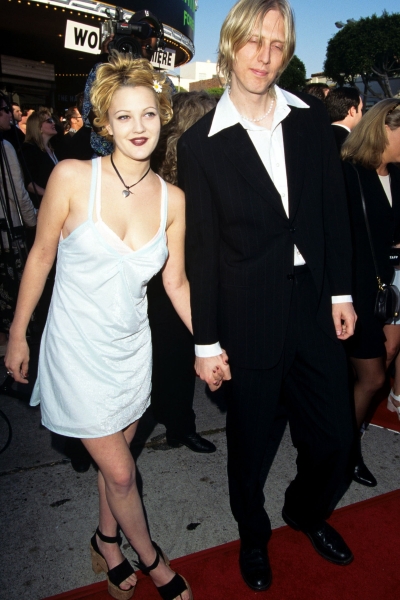
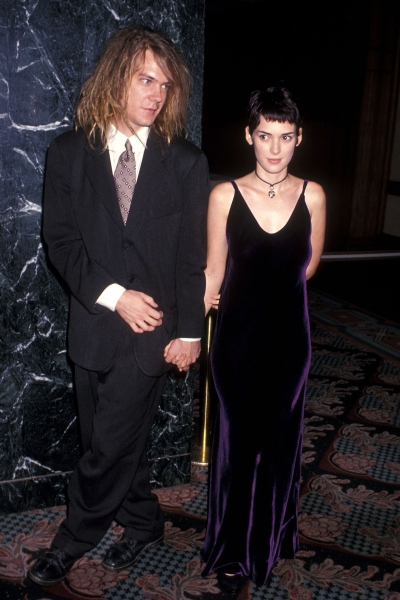
Iconic characteristics of grunge
It’s important to note, however, that grunge transcended mere aesthetics. It was an attitude and a lifestyle—and, a challenge the status quo. Nineties grunge embodied an intentional rejection of mainstream and mall culture, much like the era’s riot grrrls and slackers. It wasn’t about trends; it wasn’t about fitting in. In fact, the original grunge aesthetic was somewhat antithetical to fashion and consumerism, in general. As late fashion critic Bernadine Morris wrote in The New York Times, “a typical outfit looks as if it were put together with eyes closed in a very dark room.”
It was the Perry Ellis spring 1993 collection, which famously got Marc Jacobs fired, that etched the scruffy vibe into high-fashion history. It was also one of the first moments streetwear appeared on the runway, a prime example of an underground movement trickling-up to the mainstream. Inspired by the Seattle scene, Jacobs sent supermodels Naomi Campbell, Kate Moss, and Tyra Banks down the runway in luxe versions of thrifted classes set to a gritty soundtrack of Sonic Youth and Nirvana. They wore chiffon dresses, black-and-white flannel shirts, and combat boots—a mix Jacobs described at the time as “a hippied romantic version of punk.” Critics were not impressed: “One model even wore a nose ring,” The New York Times noted in 1993. The horror!
In that very interview, Jacobs says:
“If you look at Hollywood now, if you look at Julia Roberts or Juliette Lewis or Winona Ryder, maybe they look like they don’t wash their hair and wear dresses from thrift shops, so all these purists think they should be wearing couture dresses and feather boas and diamonds from Harry Winston. They don’t understand that there’s a glamour there too.”
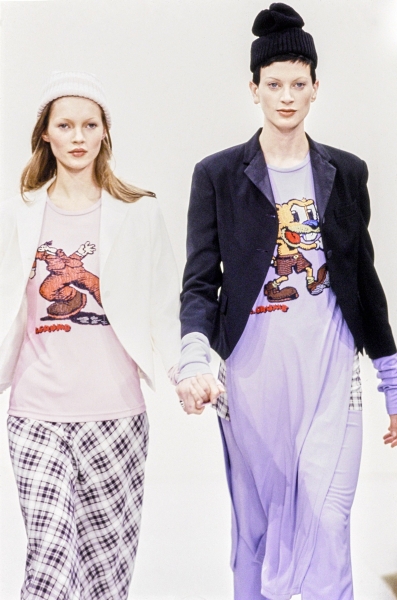
The collection unsettled the still-traditional fashion industry, and it was ultimately shelved—but not before it made its way onto the pages of Vogue in a now-iconic 1992 editorial photographed by Steven Meisel and featuring supermodels Kristen McMenamy, Nadja Auermann, and Naomi Campbell.
The collection also eventually made it straight into the hands of king and queen of grunge themselves. It did not go over as intended: “Marc sent me and Kurt [Cobain] his Perry Ellis grunge collection,” Love recounted to WWD in 2010. “Do you know what we did with it? We burned it. We were punkers—we didn’t like that kind of thing.”
Regardless, that collection made an indelible and enduring mark. In 1992, Jacobs won the CFDA Womenswear Designer of the Year Award, and in 2018, he even reproduced some of the items in a collection for his own brand called Redux Grunge Collection 1993/2018.
Of course, Jacobs wasn’t the only designer to put the grunge aesthetic on the catwalk. In spring 1993, Anna Sui brought forth her own romantic and whimsical take on the movement, while Christian Francis Roth opted for a playful approach with bell-bottoms, stocking caps, and stripes galore. The grunge aesthetic even infiltrated the runways of Calvin Klein, Donna Karan, Karl Lagerfeld, and Christian LaCroix.
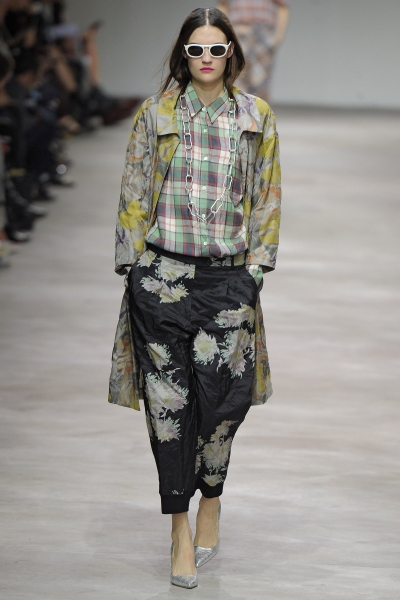

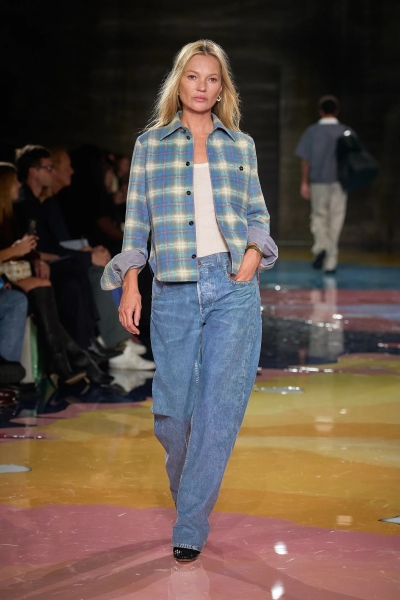
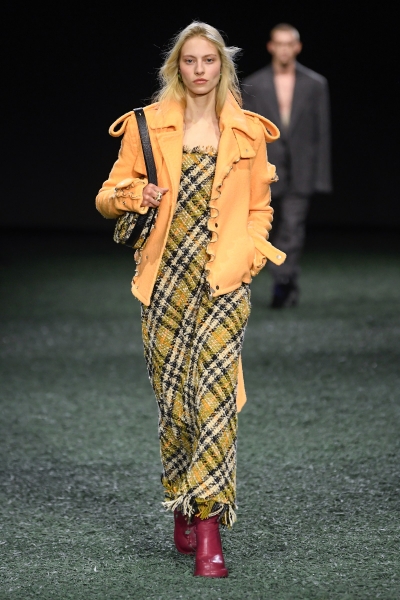
The evolution of grunge
Since the ‘90s, designers have mined the annals of grunge for inspiration. Hedi Slimane’s fall 2013 collection for Saint Laurent was themed around California grunge, a concept that arguably extended to his spring 2016 menswear collection, too. And in Sacai’s spring 2017 line, an ode to game changers, Chitose Abe showcased Cobain’s “Hi, How Are You” graphic tee on the runway.
More recently, at the Bottega Veneta spring 2023 show, Matthieu Blazy put Moss—once again—in flannel and baggy jeans, a full-circle moment that heralded the return of grunge. Today, its resurgence has been led by Gen Z, fueled by what Robbie Sinclair, creative director at trend-forecasting agency Fashion Snoops, describes as the “fatigue of being referred to as the snowflake generation and the societal expectations of them needing to be perfect, save the planet, or fix the messes created by generations before them,” plus the constant doom and gloom on social media.
Over time, the grunge look has spawned numerous manifestations: soft grunge, glam grunge, glam-goth grunge, grunge fairycore, indie-sleaze grunge, indie-punk sleaze grunge, and more. Trendsetters like Rihanna, Miley Cyrus, and Gigi Hadid are frequent wearers of ’90s-inspired grunge looks. More recently, post-millennials like Jenna Ortega, Willow Smith, and Lily-Rose Depp (like father, like daughter) have added their takes to the mix.
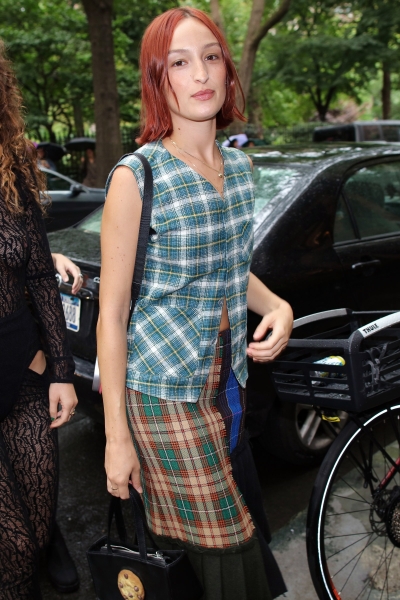
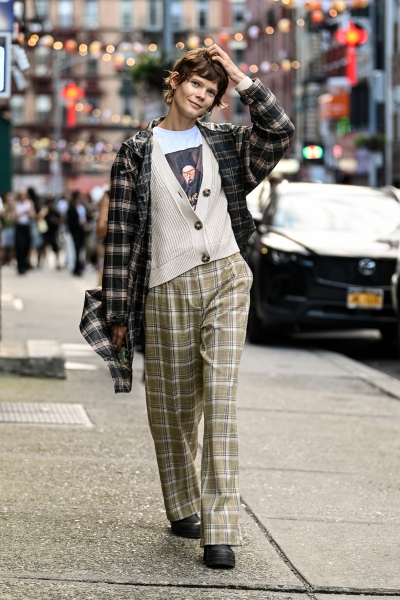
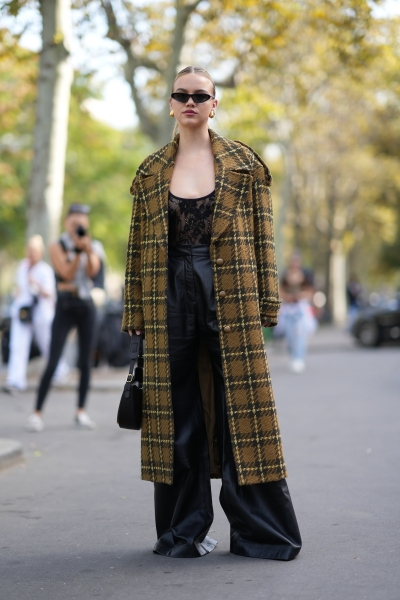
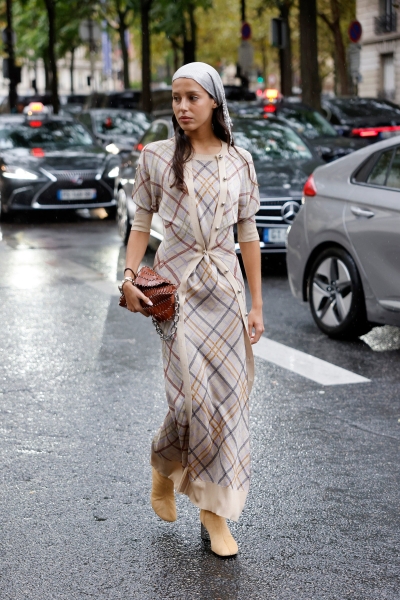
“Gen Z has this incredible knack for taking favorite elements of subcultures and aesthetics, then they fuse them together to create something entirely new that feels nostalgic for millennials,” says Sinclair. “It brings a new flavor to the parts of our past that we cherish as our wonder years.”
The current grunge aesthetic is also faintly fetishistic, romantic yet melancholic: mismatching flowy georgette dresses, billowing blouses, and maxi skirts with ruffled trims, hook-and-eye fastenings, and lingerie-inspired inserts. Still the original aesthetic’s angsty roots remain. Distressed fabrics that resemble scorched surfaces, aggressive stitching, and seemingly thoughtless cutouts visually paint the youth’s sentiments of frustration and outrage toward lawmakers. “We’re seeing new iterations of horrendous dressing, but it feels much sexier,” adds Sinclair. “But it’s not about sex. It’s about having ownership of one’s body.”
There’s also a turn toward colors that reflect our bond with nature and our gratitude for the imperfect beauty that we all embody. Picture: muddy watercolor pastels: misted mauve, faded fennel, sulking-room pink, and puddle. A few brands that have mastered the apocalyptic-teen-angst trend include Blumarine, No/Faith Studios, and Red September.
Grunge is here to stay, at least for now: “We’re seeing a huge creative explosion coming from AI, where we’re going to see grunge take on a more fantastical look that draws on otherworldly inspirations,” says Sinclair. “We’re starting to see this animalistic approach to it and a return to witchy styling.”
As fashion trends ebb and flow, grunge remains timeless, organically adapting to the times while preserving its core essence—proving that, much like its wearers, it flourishes in reinvention.

